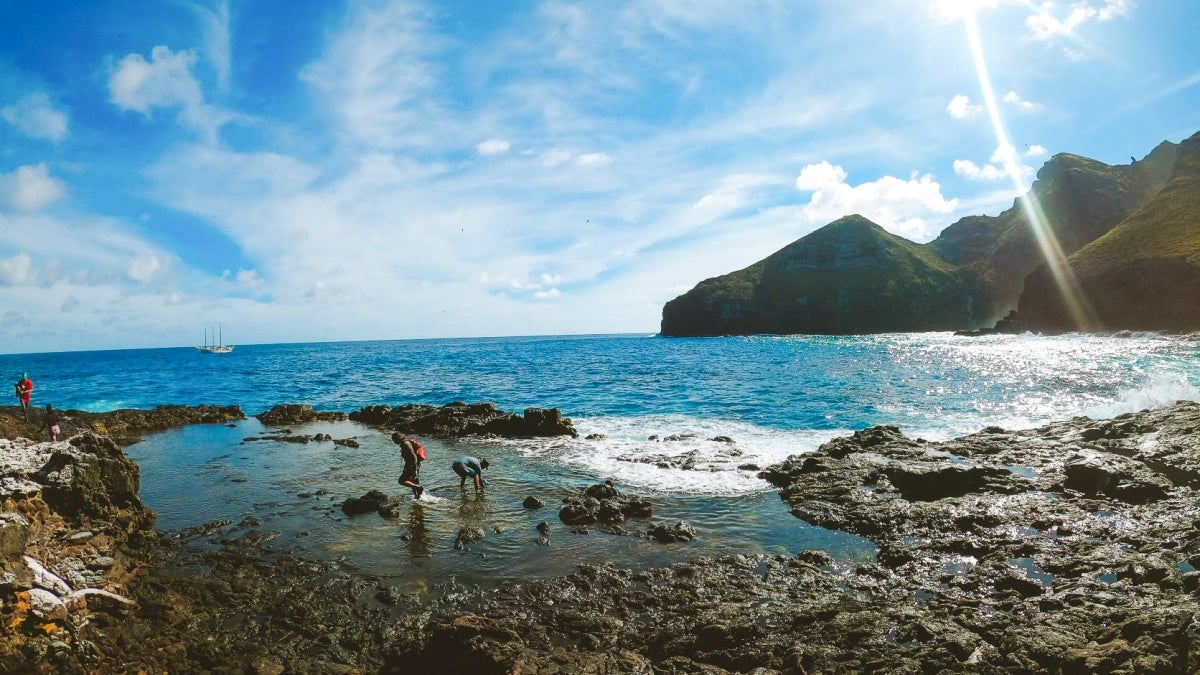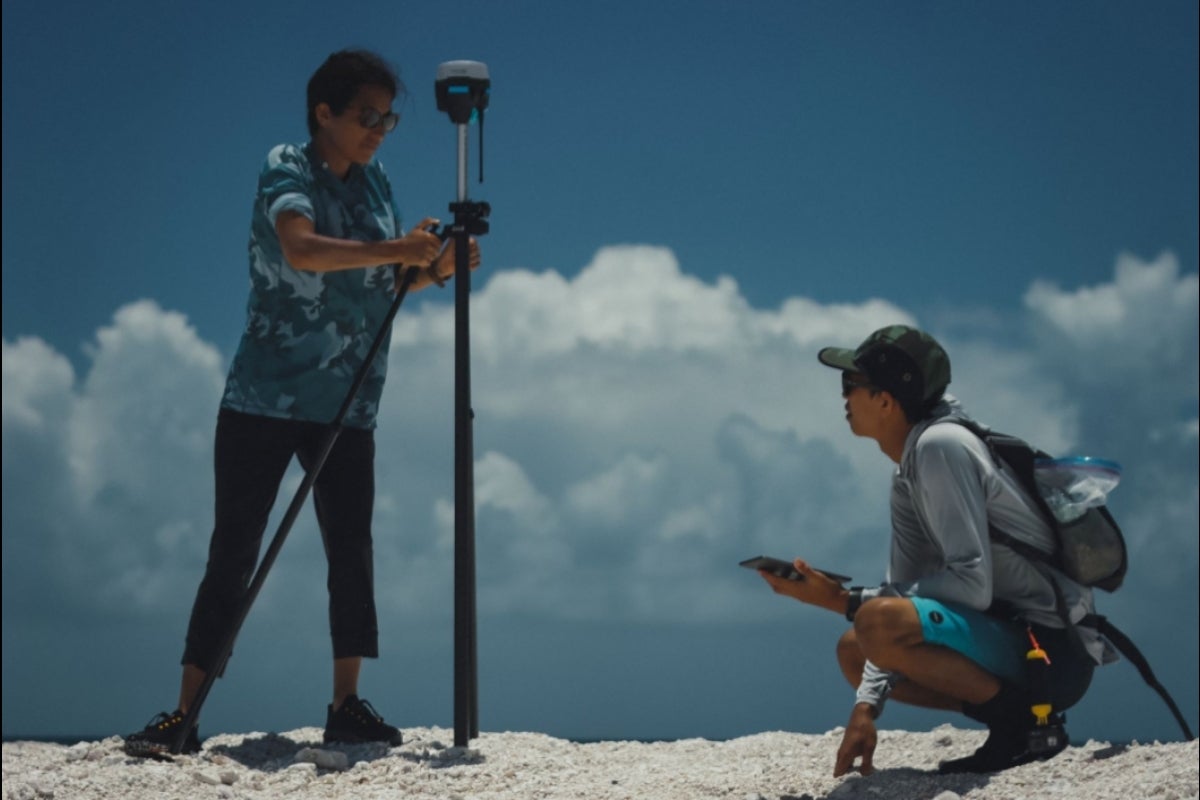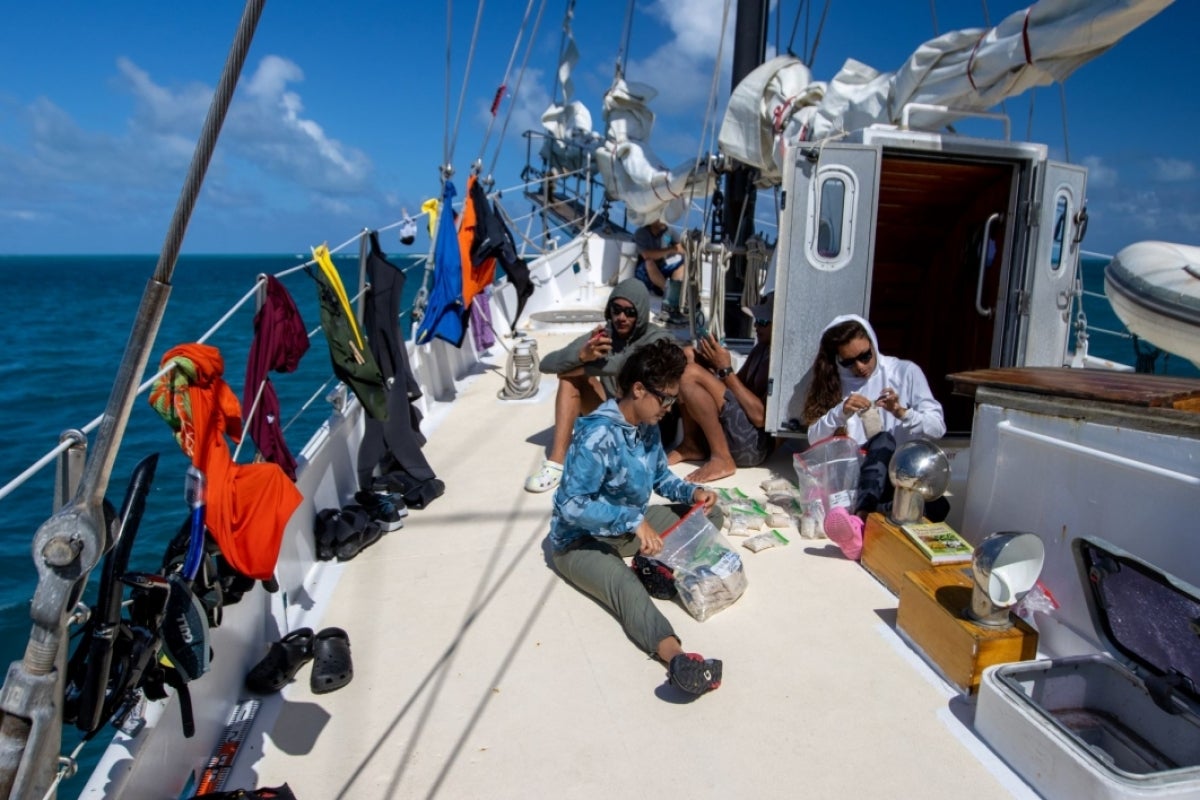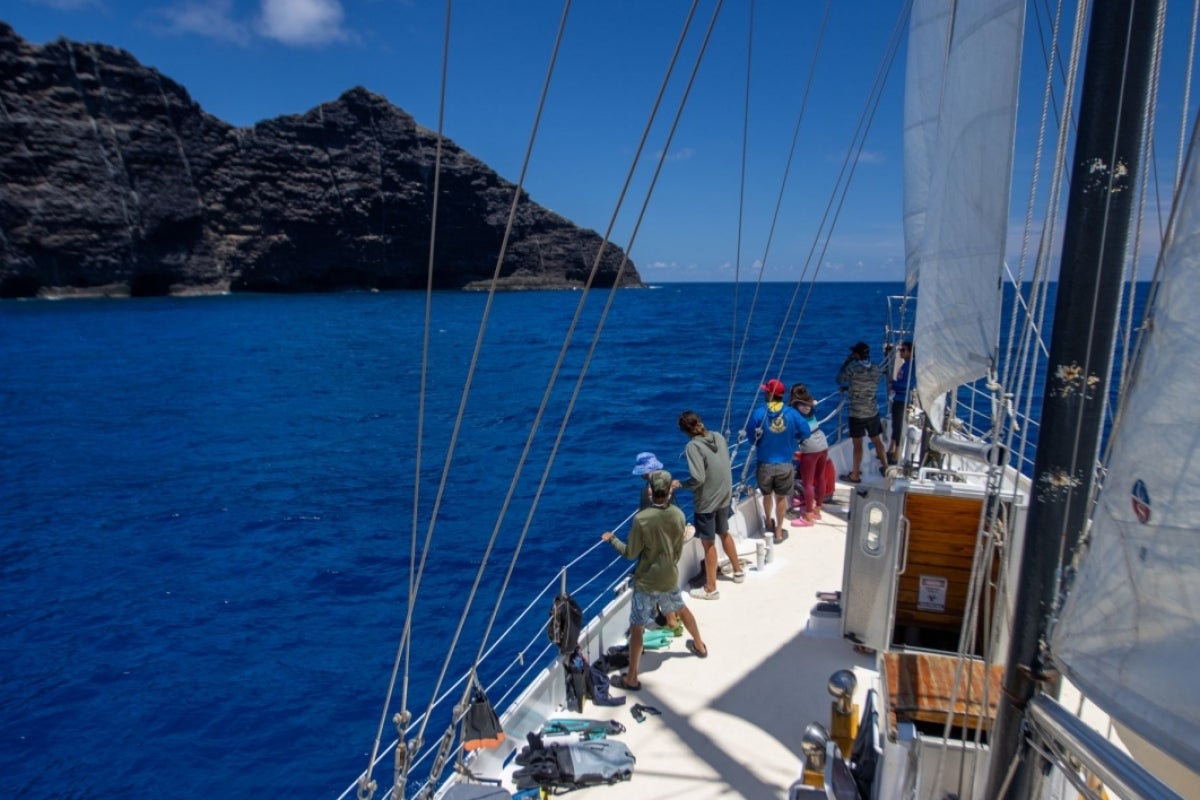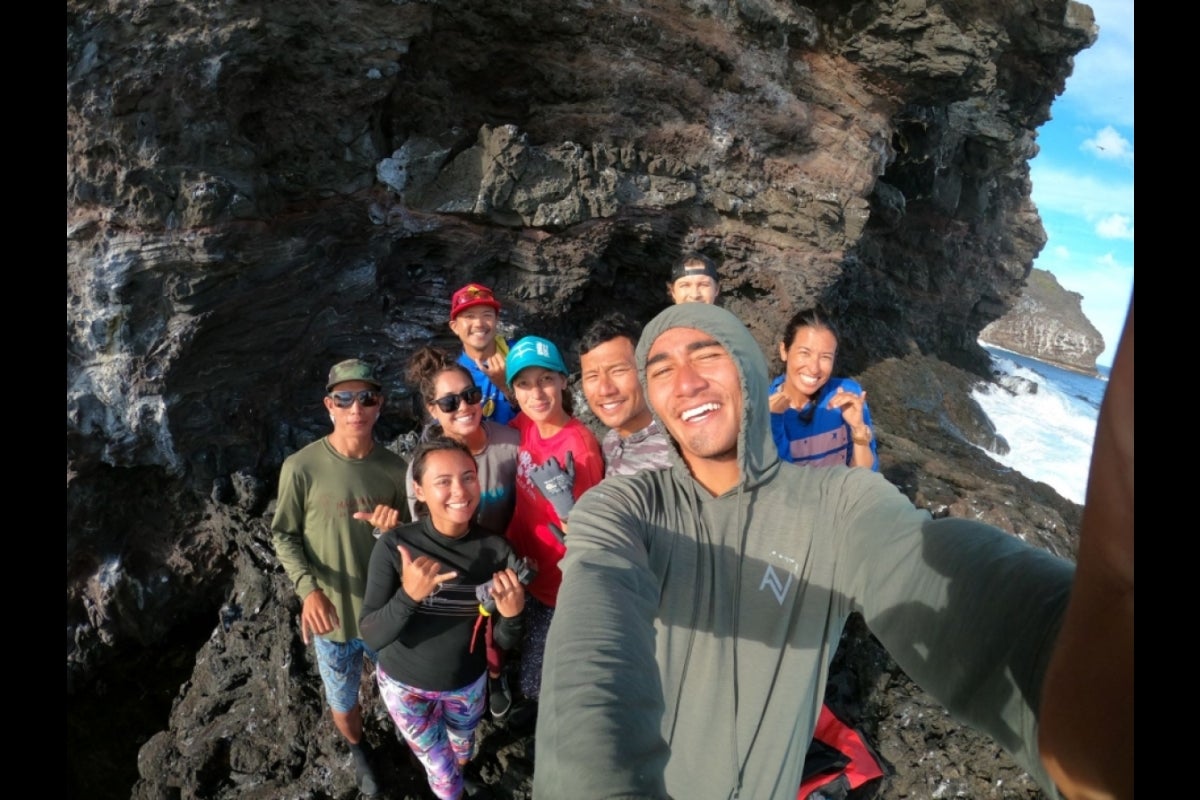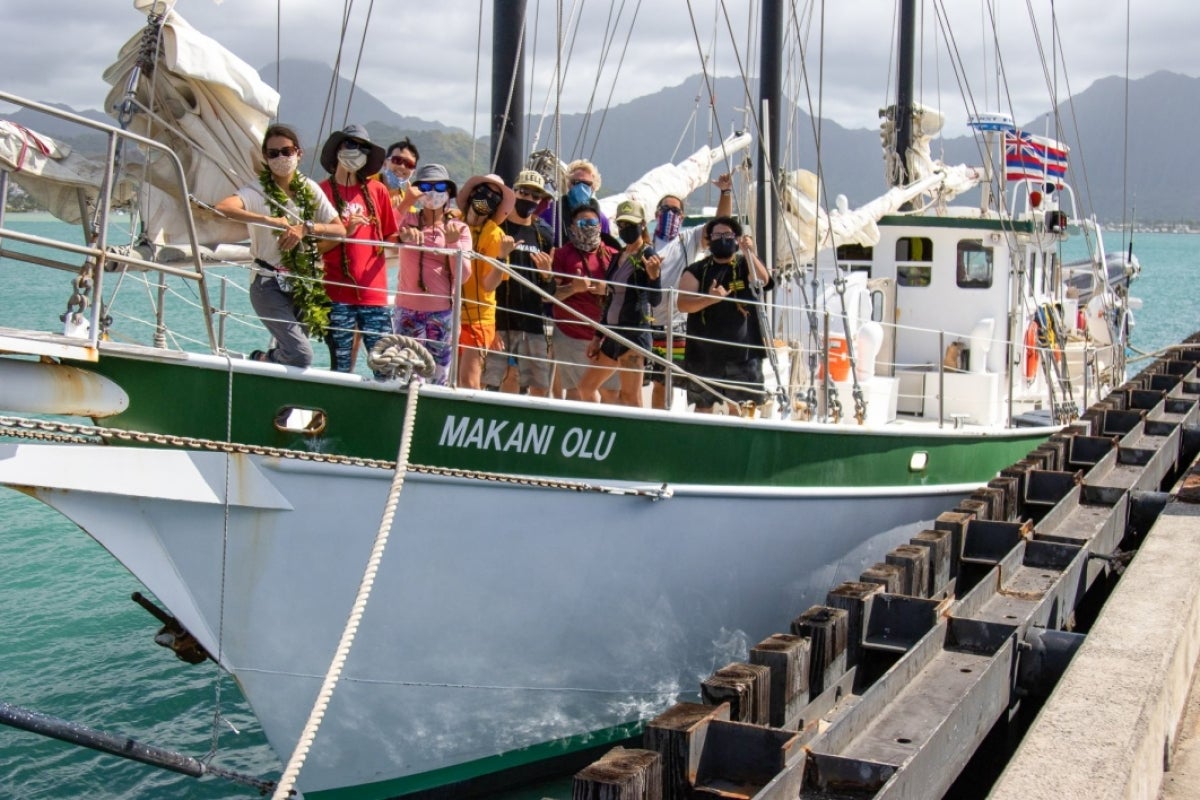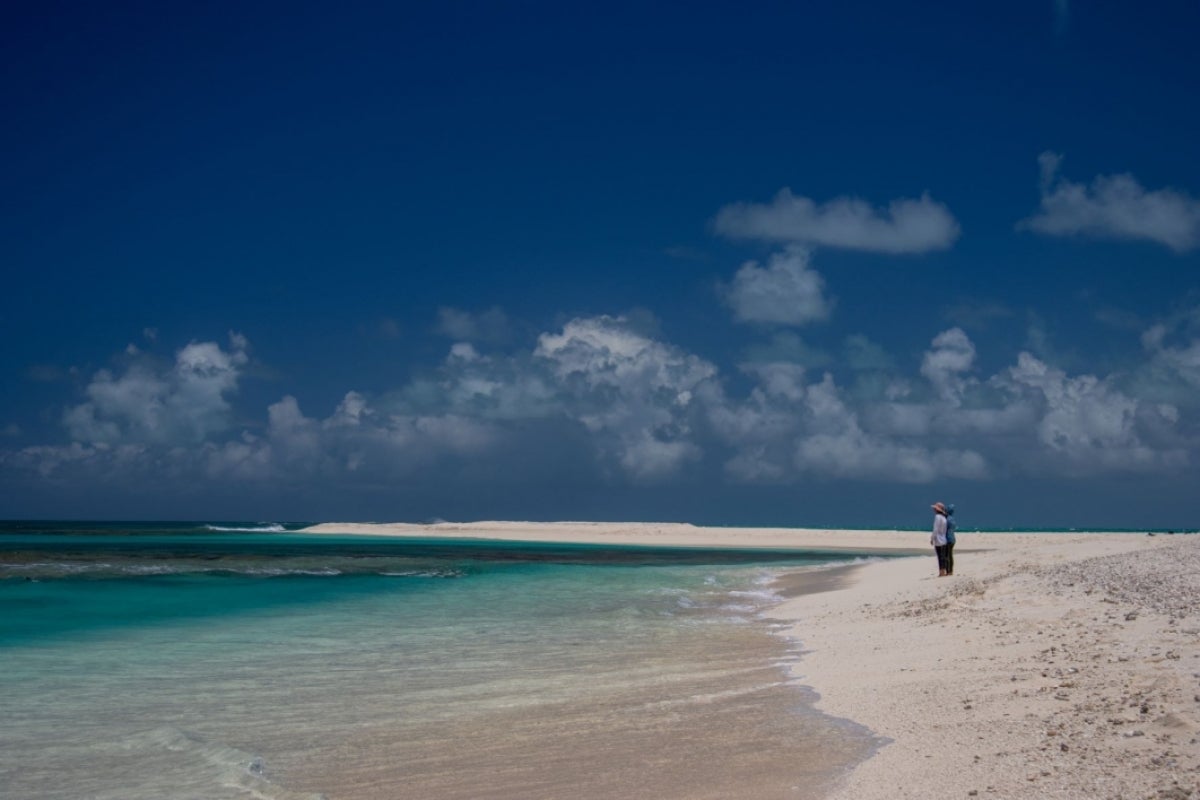It took Haunani Kāne and her team of researchers four days at sea to reach Papahānaumokuākea Marine National Monument, a time that could have easily been cut in half if they used a typical research vessel.
But they chose to travel by sailboat — an important part of incorporating the all-Native-Hawaiian scientist team’s ancestral history into their research.
“Typically, when you go out on a research boat, it’s a big ship and you burn a lot of fuel, there’s a large crew and everything is really tailored to conducting research,” said Kāne, whose research combines coastal geomorphology with spatial analysis to understand how islands, reefs and people are impacted by climate change. “But as Hawaiians we’re voyaging people, we're sailors. That's how we came to Hawaii. So, we wanted our crew and our students to experience that too.”
This August, Kāne, assistant professor in Arizona State University’s School of Geographical Sciences and Urban Planning and the Center for Global Discovery and Conservation Science, organized and led the first research team entirely composed of Native Hawaiians that would conduct climate and sea-level rise research in Papahānaumokuākea under a research permit.
The team, consisting of nine Hawaiian scientists, traveled 1,000 nautical miles by sailboat over 15 days, visiting seven islands and conducting research using Native language, traditional protocols and a cultural worldview to connect their work through a Hawaiian perspective.
“When we were planning this trip, it started as a research trip to go up there to understand the impacts of climate change and the impacts of storms and sea-level rise, but it grew into something much larger,” Kāne said. “It grew into this dream of what would it look like to do research in a really sacred place in a Hawaiian way with a group of Hawaiians.”
Preserving natural and cultural resources
With boundaries starting 150 nautical miles northwest of Honolulu, Papahānaumokuākea is one of the world's largest protected areas. A World Heritage site and a U.S. national monument, Papahānaumokuākea encompasses nearly 600,000 square miles of ocean waters, including 10 islands and atolls of the Northwestern Hawaiian Islands. Papahānaumokuākea is also highly respected amongst the Hawaiian community and a place of Native Hawaiian ancestral connection.
“Papahānaumokuākea is one of the most sacred places for us as Hawaiian people," Kāne said. "We believe that it's about Ao ʻaumākua or place. It's the realm of our ancestors, and we live in the larger islands where it's the realm of kānaka ʻōiwi or people, so in order to access it, you have to apply for a lot of permits for cultural reasons.”
In October 2018, a Category 3 hurricane ripped through Papahānaumokuākea, submerging entire islands, destroying pristine coral reefs, sweeping away vegetation and changing habitat conditions for multiple endangered species — including the endangered green sea turtles and critically endangered Hawaiian monk seals.
Kāne and her research team traveled to the national monument to better assess the impacts from the hurricane and understand how species, plants and land were affected by the storm.
“We wanted to study the impacts as well as the recovery and the ways in which the islands are naturally recovering,” Kāne said. “Because there's no people there and there's a lot of really important resources and endangered species, it was an opportunity to understand how nature recovers on its own.”
Over the course of a week, the team, using high-resolution GPS, mapped the delicate area to get a clearer picture of how sea-level rise has influenced the size and the shape of the islands, some of which are only a few meters tall.
Additionally, the team conducted 3D mapping and shallow reef environment surveys to assess recovery of the reefs and collected sediment and sand samples, to better understand the composition of the islands.
“All the material comes from the reefs themselves; there really isn't much soil or volcanic, rocky material,” Kāne said. “So, we're trying to understand what parts of the reef contribute to the island and assist in the recovery of the islands.”
A Hawaiian approach to research
Critical to their research at Papahānaumokuākea, the team interwove Native Hawaiian culture and traditions that centered on a mindset of deeper connection with place and the natural world beyond sight.
When entering new spaces and approaching new islands, the researchers offered prayer or pule, and song or mele.
“We would introduce ourselves in that way; it would help our thinking and our mind to get ready to go out and to do our research and our work,” Kāne said.
A big outcome of the trip, Kāne adds, was not only having the opportunity to participate in Native traditions but to learn them and introduce them to Native researchers that may not be as familiar, comfortable and confident in them.
“Not all of us grew up where we learned these traditions,” Kāne said. “It's an evolving process that we're all learning together on what we're comfortable with but also pushing a little bit of that discomfort on relearning our language and learning these songs and these prayers or even getting creative with it as well.”
Making science inclusive and closing the diversity gap
In the geosciences field, current representation of Indigenous and Native scholars is low. Of the estimated 26,000 PhDs in geosciences across the world, less than 1.5% are considered “other race,” an aggregate designation that makes it unclear exactly how many Indigenous and Native scholars there may be.
“I think that our fields have not yet evolved to truly feel like a comfortable safe place for Native people,” Kāne said, who in 2019 became the first Native Hawaiian woman to receive a doctorate in geology from a Hawaiian university. “A lot of times we are asked to separate our culture from our science, when culture and science are grounded — there's so much overlap.
“For us, especially in the fields that are most important to us as Native people — earth sciences, atmospheric sciences, ocean sciences, all the elements that we truly value — science is our culture, and I wanted to create a safe space for our students to conduct research and truly feel that.”
Breaking the mold
Kāne hopes research trips like this are just the start of what can be accomplished with more students in the future and is continuing to explore opportunities to incorporate traditional Hawiian knowledge and values in her teaching at ASU.
She says whether that is through creating a new class or taking a fresh approach in research with ASU’s Center for Global Discovery Conservation Science which is based in Hawaii, she hopes these activities can serve as a model of what’s possible in pushing boundaries and raising Hawaiian voices in their field.
“I hope that my students, through these experiences, don't feel like they need to be confined in a box and have to fit this specific mold of whatever that mold may be for as a scientist,” Kāne said. “I hope this trip can inspire creativity in them, confidence in them and just a little sense of being proud to be a Native, a Native person in science.”
This project was also supported by the National Fish and Wildlife Foundation, the National Science Foundation and the Office of Hawaiian Affairs.
More Environment and sustainability

ASU team creates decision-making framework to improve conservation efficiency
Conserving the world’s ecosystems is a hard job — especially in times of climate change, large-scale landscape destruction and the sixth mass extinction. The job’s not made any easier by the fact…

Mapping the way to harvesting water from air
Earth’s atmosphere contains about 13 trillion tons of water.That’s a lot of water to draw upon to help people who are contending with drought, overtaxed rivers and shrinking aquifers.In fact,…

ASU researchers test environmental risks of tire emissions on Arizona highways
The Greater Phoenix area’s roadway grid system is the envy of urban planners everywhere, and the Arizona Department of Transportation, or ADOT, strives for nothing less than…


